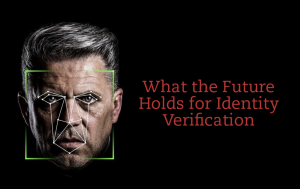
8 Reasons to Implement an MFT Strategy
Today’s businesses need to adhere to various security standards (e.g., PCI DSS, HIPAA, the GDPR) not only to prevent the high costs associated with data breaches but also to avoid hefty penalties.
However, ensuring the security of data transferred among employees, partners, vendors, and customers is becoming increasingly challenging due to the large amount of data that organizations need to handle and protect. One wrong step, such as lack of file encryption in just one workflow, could cost you dearly.
Thankfully, you can enhance the safety of your file transfer processes by using proven technologies, such as managed file transfer (MFT) software, without straining your IT resources or interrupting current business processes.
What’s Managed File Transfer (MFT)?
MFT solutions are designed to help organizations reduce the complexity of and costs associated with file transfer. They help improve cybersecurity by replacing vulnerable legacy file transfer protocols, such as FTP.
An MFT software solution is an all-in-one technology that automates and encrypts file transfers.
The administrator of the file transfer can access the program via a centralized dashboard from anywhere and perform tasks needed. The tasks can include:
- Sending encrypted files.
- Receiving and decrypting sensitive documents.
- Scheduling batch file transfers.
- Sharing information with partners via external servers or cloud-computing platforms.
- Reviewing audit logs.
- Generating audit reports for compliance.
Using an MFT solution, you can automate workflows, increase efficiency, minimize manual file transfer, and reduce the need for custom scripting.
8 Reasons for Implementing an MFT Strategy
There are many reasons why organizations should implement an MFT strategy to improve the safety and efficiency of their file transfer processes:
1. MFT Helps Ensure Compliance with Data Security Regulations.
An MFT software offers a high level of security to protect critical data, such as personally identifiable information (PII) in healthcare or credit card payment information in banking.
It helps you effectively eliminate many vulnerabilities from your business communication processes. This will help you not only prevent costly data breaches but also avoid fines associated with the violation of stringent industry regulations.
Most MFT solutions are compliant with common requirements (e.g. PCI DSS, HIPAA, HITECH, and the GDPR.) You can use various features, such as auditing, reporting, role-based access, centralized security controls, key management, encryption, and secure protocols to protect sensitive information.
2. MFT Provides an Audit Log for Your File Transfer Activities.
There are many situations in which you need to audit your file transfers. For example, a business partner requests an overview of the month’s transfer activities, you need to troubleshoot a failed file transfer, or you need to launch an investigation for a data breach.
MFT software stores detailed audit records for all file transfer activities and some also offer the capability to search the audit log for specific terms, users, or date ranges. You can get details about the transfer workflows and investigate whether each step succeeded or failed.
3. MFT Enhances Security Without the Hassle.
If you have been using FTP for file transfer, it’s time for an upgrade. FTP is an old technology that doesn’t meet modern security standards and fails to protect files whether they’re sent through private or public networks.
You should also consider upgrading to MFT software if you have been using homegrown solutions, which often have many security gaps and vulnerabilities that can easily be exploited by hackers. Not to mention, their maintenance is often time-consuming and labor-intensive.
With an MFT solution, you don’t have to worry about the risk, maintenance, and programming needed to set up a file transfer protocol. The software is easy to use and you can schedule batch transfers to improve efficiency. Secure data exchange methods such as SFTP, FTPS, and HTTPS help ensure that all the files are properly encrypted.
4. MFT Minimizes the Impact of IT Downtime.
Did you know that system downtime costs organizations an average of $100,000 an hour? While not all downtime is preventable, you can mitigate its impact on your organization by making sure that critical file transfer systems and servers are available to minimize delays.
A robust MFT solution offers active-passive and active-active (i.e. clustering) methods to help keep your processes running even if you encounter other IT issues. For example, clustering ensures the highest availability by running multiple servers concurrently so your communications won’t be disrupted if one server goes down.
5. MFT Helps You Comply with Government Requirements.
If your organization services government agencies, you’re required to follow special reporting and encryption requirements issued by the US National Institute of Standards and Technology (NIST). These requirements are complex so it’s very challenging and inefficient to build a homegrown solution that meets all the criteria.
On the other hand, an MFT solution can fulfill various NIST requirements with FIPS 140-2 compliant AES and Triple DES encryption algorithms, audit logs and reports, secure authentication and user controls, etc. As such, you don’t have to reinvent the wheel when you get a government contract.
6. MFT Facilitates Secure File Exchange in the Cloud.
As more businesses are migrating to cloud computing, you’ll inevitably need to exchange files in the cloud — whether within the organization or among partners, vendors, and customers.
However, it’s often challenging to maintain proper cybersecurity practices in these situations. For example, how can you be certain that it’s safe to store sensitive files on a third-party cloud?
Advanced MTF solutions allow organizations to streamline and automate their cloud file transfers to platforms such as Microsoft Azure and Amazon Web Services with strong encryption, whether the files are at rest or in transit.
7. MFT Streamlines Workflows with Third-party Integrations and Automation.
Some MTF applications also offer integrations with popular cloud-based services such as Box, Salesforce, and Google Drive. This helps promote the movement of data between on-premise environments and a variety of cloud applications.
The automation allows you to streamline workflows, increase efficiency, and minimize errors or bottlenecks caused by manual processes. Meanwhile, you can continue to use the many cloud-based productivity tools and add an extra layer of security without interrupting your current business processes.
8. MFT Reduces Your IT Costs.
Devising your own file transfer solution while keeping up with the many security standards can be very expensive. Not only do you need to create custom scripts and single-function tools but you also have to invest in IT resources for ongoing maintenance and upgrade so the program meets the latest cybersecurity protocols.
An MFT solution eliminates many manual processes and therefore overhead costs associated with IT maintenance. Not to mention, the many automation features also allow you to increase efficiency and cut down on time-consuming manual tasks that can be costly in the long-run.
Conclusion: Improve Security and Cost-efficiency with an MFT Solution
To stay competitive and optimize profits in today’s complex business environment, you can’t afford to overlook the security and cost-efficiency of your data transfer processes.
Using an MFT solution allows you to leverage the latest cybersecurity measures to ensure the safety of your business-critical information.
MFT Guidelines helps you stay compliant with increasingly complex and stringent regulatory guidelines while streamlining the workflows so critical information can flow smoothly among various stakeholders to optimize operational efficiency.
The post 8 Reasons to Implement an MFT Strategy appeared first on ReadWrite.





